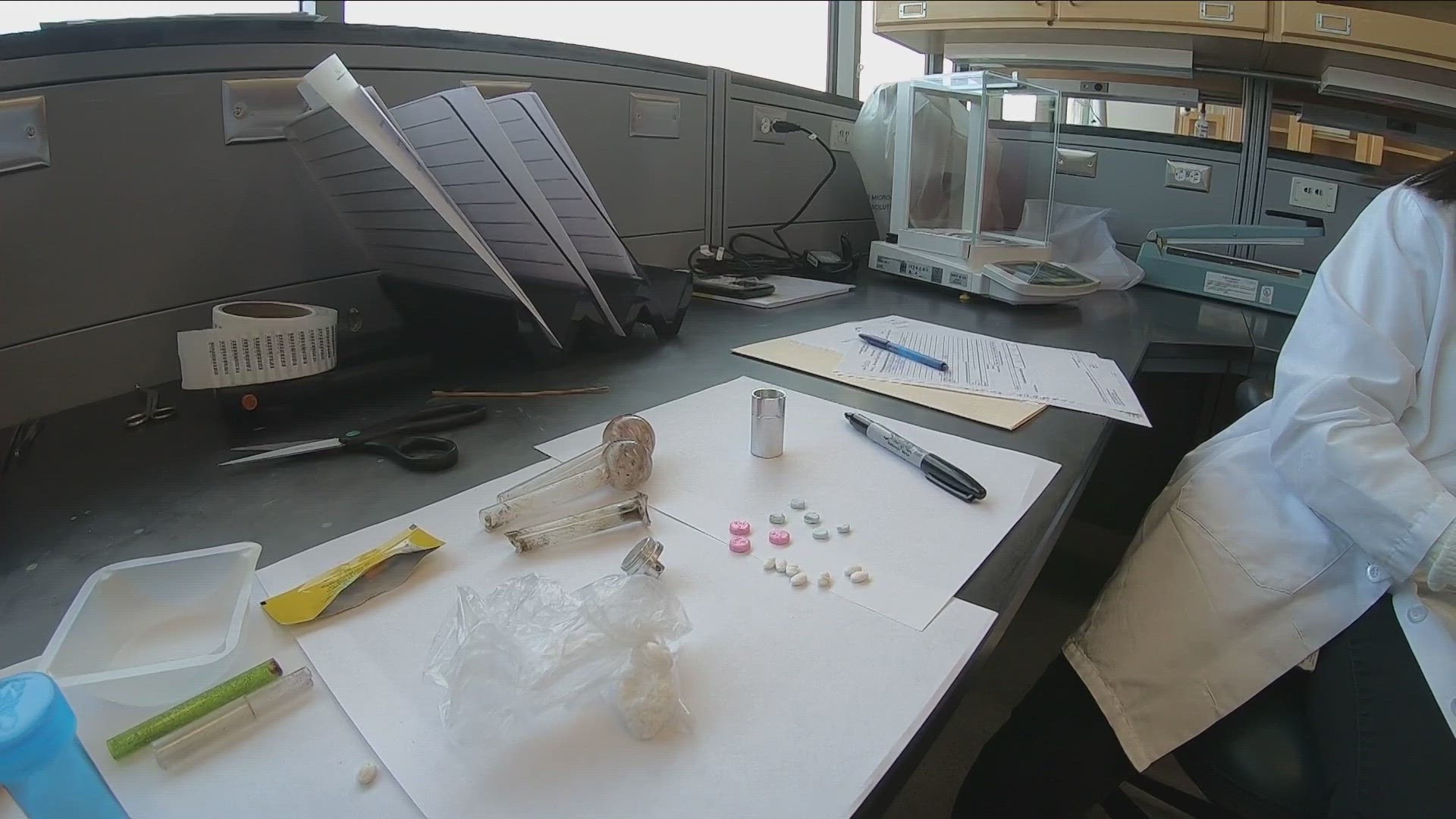BUFFALO, N.Y. — Erie County health officials reported a record number of opioid overdose deaths in 2022, and a growing portion of those deaths involved drugs such as cocaine and methamphetamine being laced with narcotics.
Determining which toxic combination is to blame for people's deaths is a crucial step in staying ahead of the epidemic, both for law enforcement but also public health.
That's why there's a dedicated lab in Erie County doing just that.
2 On Your Side was given special access to the team of six scientists that identify the drugs that are out on the streets and perform evidentiary analysis for each law enforcement agency countywide.
"So this looks like there a handful of tablets that were submitted suspected crystals in a vile, glass pipes, white rocks," said Kaity Drollette, the lab's supervisor and a forensic chemist.
Drollette was reading from a list of items that had been cataloged by her team after being brought in by law enforcement. Visual inspection is one of the first steps but determining what is in those tablets or powders is even more important, as more often than not they're laced with other drugs that can only be revealed through multi-step analysis.
"When I first started based on the packaging based on the look of it, obviously it would still need to be confirmed, but you could get an idea of the substance just based on how it was submitted," Drollette said.
After close to 15 years working in the lab, she said that's changed.
"We're having these cases where based on the look of it, based on what we've seen, it's coming back as something different," she said.
For example, a bag of cocaine laced with fentanyl looks almost identical to a bag of cocaine without the narcotic. And according to the health department, these look-alikes have had devastating impacts.
In 2016, cocaine was found in only 16% of Erie County opioid overdose deaths, but in 2022 so far 56% of opioid-related overdose deaths have had both fentanyl and cocaine in their toxicology screens.
But cocaine isn't the only example.
"You've got amphetamine that has meth in it, you have oxycodone that has fentanyl in it, and these Xanax tablets that have other benzodiazepines," Drollette said.
Beyond visual analysis, an initial test that the lab does involves dropping suspected drugs into a clear reagent called Marquis. The reagent reacts with things like heroin and turns purple and orange when it comes into contact with meth.
The most detailed analysis done by the lab includes a piece of equipment called a Gas Chromatograph-Mass Spectrometer, or GC-MS.
Drollette explained how the GC-MS performs two tests in one. First, potential drug samples are dissolved in methanol, turned into a gas, and then squeezed through a column. Drugs such as fentanyl and cocaine, she said, get pushed through at different rates so the lab can identify what is what.
The second step, or Mass Spectrometer portion, involves bombarding the gas with electrons and breaking it apart, into what she called "separate puzzle pieces."
"So cocaine and fentanyl would break down into separate puzzle pieces, but the same puzzle pieces every time they go through," Drollette said.
Those puzzle pieces or chemical make-ups are then compared with standard reference material that is purchased by the lab.
Last year the county reported 28 overdose deaths involving meth laced with other potentially deadly drugs. Thirteen have been linked to another chemical called Xylazine, or "Tranq," an animal tranquilizer used for sedation and pain relief that's being increasingly used in illicit drugs.
"It's the work that's done here in this section of the lab it's the first step and then communicating that back out to the district attorney's office communicating that out to the health department and the treatment providers to try and fine-tune that and making the community aware," Erie County Central Police Services commissioner Jim Jancewicz said.
And while new dangers and new changes to the illicit drug market could come tomorrow, the lab will continue letting the public know what's out there.

